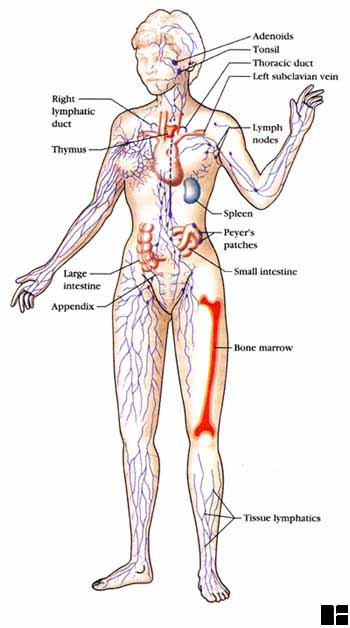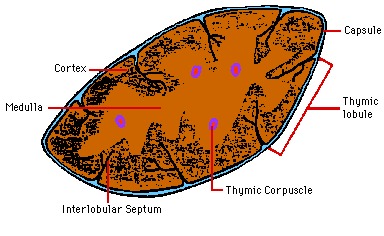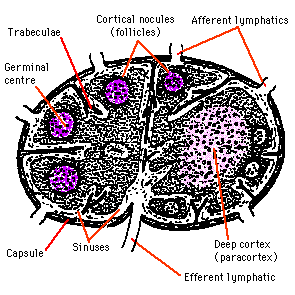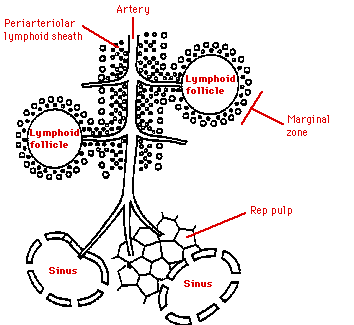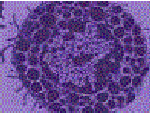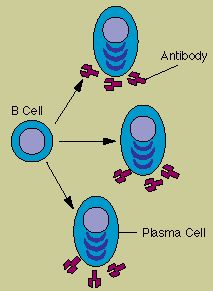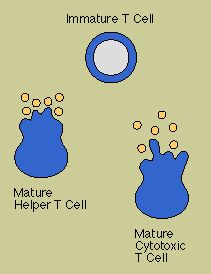|
A generation ago, many Peoples believed that medical science had conquered infectious diseases. Vaccines protected against the ravages of smallpox, whooping cough, and polio. New antibiotic drugs cured diseases such as tuberculosis, pneumonia, and streptococcal infections. In the United States and other industrialized nations, cleaner, safer living conditions had virtually eliminated malaria, cholera, and other severe diarrheal and parasitic diseases. Despite a myriad of medical advances, infectious diseases today remain among the most serious challenges to public health, killing more people worldwide than any other single cause. In the United States, new diseases such as AIDS, Lyme disease, Legionnaires’ disease, hantavirus pulmonary syndrome, and hepatitis C have emerged to sicken or kill thousands of people each year. In addition, other new diseases that seemed to be under control are now reappearing. Many microbes and insect vectors of disease are undeterred by previously effective control strategies. For example, some tuberculosis bacteria are no longer susceptible to antibiotics, and many mosquitoes carrying malaria parasites are resistant to insecticides. Diseases are also spreading to new geographic locations—cholera outbreaks in South America and dengue fever in the southern United States.
Understanding The Immune System
Inside your body there is an amazing protection mechanism called the immune system. It is designed to defend you against millions of bacteria, microbes, viruses, toxins and parasites that would love to invade your body. To understand the power of the immune system, all that you have to do is look at what happens to anything once it dies. That sounds gross, but it does show you something very important about your immune system. The human immune system is a truly amazing constellation of responses to attacks from outside the body. It has many facets, a number of which can change to optimize the response to these unwanted intrusions. The system is remarkably effective, most of the time. The Anatomy of the Immune System The immune system operates throughout the body. There are, however, certain sites where the cells of the immune system are organised into specific structures. These are classified as central lymphoid tissue (bone marrow, thymus) and peripheral lymphoid tissue (lymph nodes, spleen, mucosa-associated lymphoid tissue):
|
1. Bone marrow
|
The following cell types are present: lymphoid cells 3. Lymph nodes a) Structure
|
The node is made up of three components: lymphatic sinuses c) Paracortex e) Passage of lymph
|
b) Red pulp
|
The recirculation is a complex process depending on interactions between the cells of the immune response and other cell types such as endothelial cells. virgin lymphocytes move from the primary to secondary lymphoid tissue via the blood activated lymphocytes move from the spleen, lymph nodes and MALT into the blood and thence to other lymphoid and non-lymphoid tissues antigen presenting cells such as macrophages and dendritic cells may carry antigen back to lymphoid tissues from the periphery. The complex patterns of recircultion depend on the state of activation of the lymphocytes, the adhesion molecules expressed by endothelial cells and the presence of chemotactic molecules which selectively attract particular populations of lymphocytes or macrophages. 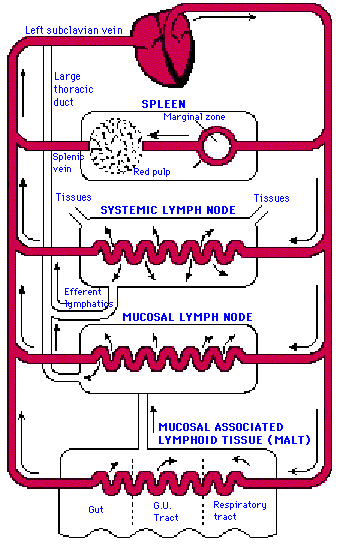 |
KILLER CELLS B cells and T cells Once they are fully mature, the B and T cells travel to the spleen and
nodes ready to fight infection. B cells react against invading bacteria or viruses by making proteins called antibodies. The antibody made is different for each different bug. The antibody locks onto the surface of the invading bacteria or virus. The invader is then marked with the antibody so that the body knows it is dangerous and it can be killed off.
What are antibodies? Antibodies are proteins made by the B cells. They have two ends. One end
sticks to proteins on the outside of white blood cells. The other end sticks
to and helps to kill the germ or damaged cell. The end of the antibody
that sticks to the white blood cell is always the same. So it is called
the constant end. The end of the antibody that recognises germs and damaged
cells varies depending on the cell it is designed to recognise. So it is
called the variable end. Each B cell makes antibodies with a different
variable end from other B cells. Cancer cells are not normal cells. So
there will be some antibodies with variable ends that recognise cancer
cells and stick to them.
Killer T cells kill the body's own cells that have been invaded by the
viruses or bacteria. This prevents the bug from reproducing in the cell
and then infecting other cells |
Your Immune System and Cancer
When the immune system fails The attack may succeed, or it may come too late: the tumor may be beyond the power of the immune system by itself. The immune system may need help—bold measures such as: May help
How can these immune challenges be met? |
G LAKHOVSHY Georges Lakhovsky
We believe that in the future if the powers to be are retrained When a body becomes overwhelmed with toxic substances, thoughts or feelings, the positive bio-electric field is immensely lowered in vibration and frequency. In other words, our body has a higher frequency or vibration when it is healthy and a lower vibration when it is sick. Healthy cells, according to Nobel prize winner Otto Warburg, have cell voltages of 70 to 90 millivolts. Due to the constant stresses of modern life and a toxic environment, cell voltage tends to drop as we age or get sick. As the voltage drops, the cells are unable to maintain a healthy environment for themselves. If the electrical charge of a cell drops to 50, a person can become chronically fatigued and may get sick often. If the voltage drops to 15, the cell becomes diseased. When the body's immune system gets overwhelmed and cannot fight an abundance of toxins and then we continue to put toxins into our bodies and minds such as alcohol, nicotine, caffeine, negative fear-based thoughts and heavy emotions, we can experience a physical imbalance.
It is the same for the cells of the body. Without enough energy to operate, the cells become toxic and malnourished. Then, when presented with an infectious organism they have lost the vitality to resist. One way to efficiently and safely raise cell voltages is with a device
called an MultiWave Oscillator. Invented by Georges Lakhovsky in the early 1900's. Dr.
Lakhovsky discovered that healthy cells acted like little batteries and
discovered how to recharge them (raise their voltages). He found that
transmitting energy in the range between 750,000 hertz and 3,000,000,000
hertz raised the cell's voltage. Most illness is an autoimmune illness. When your immune system cannot
ward off a problem in your system in time, something fails. Your only
defense is your immune system. By raising the oscillating frequency of
every atom in your body, we are increasing the rate at which the immune
system operates as well as eliminating the negative toxins that your
body is trying to fight off. How can these immune
challenges be met? Lakhovshy,s MultiWave Oscillator Besides this technical information, the life of |
Immune System Debate There are a number of body areas that are definitely under-researched as they are not readily visible to microscopes, let alone the naked eye. The lymphatic system, nervous system, and the immune system are the most talked about. Our immune systems keep disease at bay and try to rally round the wagons when invaders appear. We’ve been told to visualize our white blood cells fighting off viruses, bacteria and even cancer as well as visualizing pain retreating and becoming manageable. Biofeedback has become a part of mainstream medicine. So, to some extent, our minds control what the rest of our bodies do, and whether or not everything functions properly. That means, the immune system is not an individual section of the body that is independent of our organs and skeletal structure. It’s no wonder that stress, worry, fear, lack of money, relationship
problems, family conflict and work issues have been found to affect the
immune system, opening our bodies to all manner of attackers. How can
we be healthy when our minds are occupied 18 hours a day (assuming we
sleep for 8 hours) with fending off outside influences. Since the 1950s
our collective lives have become much more complicated. Women in those
days thought that they were unfulfilled because they didn’t work
outside the home. Now, women wonder how they got into the position working
two full time jobs (one of them totally unpaid) with no relief in sight?
No wonder many men and women are opting out of the rat race and trying
to get back to a semblance of the simple life. I now know why most people
yearn for a cottage by a lake or a cabin in the wilderness by a babbling
brook. A therapy based on the immune system is the Rife Cancer treatment which uses high frequencies to eliminate parasites that have invaded the organ that is affected. First comes the parasite/virus, and then the cancer. A depressed immune system allows this to happen and when the cancer cells start multiplying, the body cannot fight back. Something as simple as a cut or a scratch can tell you
if your immune system is weak or strong. If healing starts immediately,
there’s no problem, but if the cuts always become infected before
eventually healing, one should start working on the immune system. |
Stress, the immune system and cancer Alpha-Theta
Stim There is some scientific evidence that stress does weaken our immunity. Two studies looking at whether stress affected cancer recurrence had conflicting results. While no one knows whether strengthening immunity can help to cure cancer, most doctors and nurses agree that reducing stress is a good thing to do.
While many life stresses cannot be avoided altogether, there are ways of trying not to let things get to you. Many complementary therapies such as Light and sound, Biofeedback, CES, meditation, massage and reflexology, for example, can be very relaxing |
CONCLUSION Balance is the Key Observer Life: Health -------------------------------------------------------------------------------- Should the NHS embrace complementary medicine? Devon GP Michael Dixon argues the case for an integrated health service The NHS debate - Observer special Sunday July 22, 2001 Some 40 per cent of GPs are happy to recommend complementary therapies
to their patients - indeed, 20 per cent offer them on their premises. But
for every doctor who is on-side, there will be another who sees anything
'alternative' as so much hocus-pocus. Ask senior managers in the NHS about
complementary medicine and you will probably be met with a weary smile.
The new NHS, they will tell you, is about equity, evidence and accountability.
They will say that there simply isn't enough money to offer all patients
complementary therapies, when in most parts of the country people still
have to wait more than a year for serious heart operations. Then they will
add that the evidence of efficacy for complementary medicine is still largely
unsatisfactory, and that quality control and regulation are not good enough
to justify the taxpayer forking out for it. Some would argue, anyway, that it is wrong to separate the specific treatment from the effects of the therapist and then subject it to rigorous scientific analysis. The treatment, the consultation and the methodology all go hand in hand. Complementary therapists are particularly skilled in providing their patients with large doses of 'the human effect'. This involves giving time, empathy, hope and reassurance. Their approach is holistic, providing very individual treatment and often 'works' by improving the self-esteem and confidence of their patients. Modern research in psychoneuroimmunology has shown that this human effect can produce major positive changes in the immunological system. Perhaps not surprisingly as our brains and immunological systems have developed together over millions of years. Curing, it appears, has everything to do with caring. This may be true, say the cynics, but you're talking about a placebo effect, and you can't ask taxpayers to pay for a placebo. But it's not as simple as that. I don't think that the complementary therapies I suggest to my patients are placebos, but I don't know. The trouble is that with many complementary therapies, the human effect is so great that it is often difficult to know if the specific treatment is a placebo or not. It is possible that many complementary therapies have a very small specific effect of, say, 5 to 10 per cent, with a much larger 40 to 50 per cent effect due to the therapist/ patient interaction. The overall package may be more therapeutic than giving the same patient a strong and expensive conventional remedy with a proven specific effect of perhaps 30 to 40 per cent, but where the added benefit of the therapeutic encounter may be much smaller. A couple of years ago, I published a paper in the Journal of the Royal Society of Medicine about a healer who has been working in our practice for nine years. The study revealed that 50 per cent of her patients had shown considerable improvement. These were chronically ill patients who had not been helped by any previous conventional or complementary treatment. The editor of that venerable journal did not challenge the findings. But he did quite reasonably argue that the research had failed to prove that this was not simply a placebo effect. The point is: does it matter? Not, apparently, to the patients nor to our own practice, which has continued to employ her. Perhaps our concepts of symptoms, disease and health are a little too narrow. Maybe we should consider well being and quality of life as well when deciding whether a treatment works or not. Patients seeing complementary therapists seem to frequently change their attitude to their problems, themselves and their lives generally. Complementary medicine at its best is empowering. It encourages people to use and to recognise their own self-healing abilities and to develop more active approaches to life beyond the classic active/passive relationship of the conventional medical encounter. It also encourages people to explore their own healing abilities with others. Indeed, a new mantra of 'heal yourself by healing others' may be a useful antidote to the alienation and unhappiness of a culture that has encouraged individuals to concentrate only on meeting their own needs. If the self-help philosophy of complementary medicine can reduce the demands on orthodox medicine and leave more resources for high-technology care when it is necessary, then there is every reason for the NHS to embrace it warmly. In some ways, complementary medicine is simply replacing the vacuum left by modern medicine, which has become too confident in its new pills and potions and has forgotten about the crucial therapeutic effect of the interaction between patient and therapist. Patients are wise to this. History is repeating itself. In 1666, the physicians fled from London during the Great Plague and their patients turned to the apothecaries, who were later to become today's general practitioners. So it is hardly surprising that complementary practitioners should move in to fill the void when general practitioners proudly declare, 'Dr Finlay is dead.' Conventional medicine should welcome them at a time when there are insufficient conventional doctors and nurses to man the pumps. Thus the scene is set for Integrated Medicine (integrating orthodox and complementary care). Nationally the Federation for Integrated medicine and its president HRH Prince Charles have been strong advocates of this concept. The new NHS believes in patient choice. Ergo it should offer integrated medicine, which maximises both safety and choice. Certainly such integration has been well received by patients in my own surgery. They have had the safety of an orthodox medical diagnosis plus the added benefit of a complementary approach, when conventional medicine was either not appropriate or failed to find the answer. But the benefit is not only to patients. Like most orthodox doctors who have dallied in the complementary, I have radically changed my outlook and attitude and consequently enjoy my work much more. Complementary practitioners working in the surgery feel the same. We have been able to learn much from each other. I used to grit my teeth and silently fume when patients rejected my conventional remedies and said they wanted 'something natural'. Today, I feel quite the opposite. I know that generally what the patient wants is more likely to make him or her better. I am able to suggest a range of options, and when the patient goes off to purchase the suggested 'natural' treatment, I am comforted by the knowledge that he is saving the NHS a conventional prescription and keeping scarce resources for when they are absolutely necessary. So in my own practice I will continue to refer to complementary practitioners and advise on complementary treatments. Partly because my patients want me to, partly because they help, and partly because they overcome the impotence of trying to match every patient need with a limited range of conventional remedies. A few days ago, a new patient entered my surgery in tears and said she felt very ill. A few minutes later my computer crashed while trying to produce her prescription. While waiting for it to revive, we discussed potatoes, which turned out to be a subject of mutual interest. When she got up to leave, I apologised for talking about potatoes rather than about her. She smiled and said that she felt much better anyway. Both of us had forgotten about her prescription, which was still jammed in the computer. That is how real life is. Recent research on aromatherapy suggests that it could improve mental ability but only if the patient believed it would. That will not stop me referring 'believers' for aromatherapy. Indeed, I would interpret the research as showing that I should. As far as the wider NHS is concerned, complementary medicine has the potential to humanise modern medicine and widen its vision beyond pathology and illness to health and well being in its widest sense. It adds a splash of colour to the black and white of orthodox science. Patients, with their duality of heart and mind, need both. If the NHS refuses to embrace complementary medicine, then it is refusing to listen to its own patients (75 per cent of patients would like the NHS to offer complementary therapies). It will be denying choice and encouraging inequity. Complementary medicine will only be available to those who can pay for it. The NHS will be saying that it knows better than its patients at a time when paternalistic attitudes of this sort are supposed to be anathema. Meanwhile, I prefer to err on the side of optimism. One day soon, hopefully, increased patient power, NHS resources and vociferous advocates of integrated medicine will shift the balance between the conventional and the complementary, and the great event will happen. The NHS will finally lower its drawbridge and the historical rift between the orthodox and the alternative will be over. · Dr Michael Dixon is a GP at College Surgery in Cullompton, Devon and the author of The Human Effect in Medicine (£17.95, Radcliffe Medical Press). |
